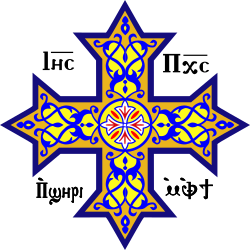| Part of a series on the |
| Copts |
|---|
| Culture |
| Regions |
| Denominations |
| |
| Part of a series on |
| Discrimination |
|---|
 |
The persecution of Copts and broader patterns of discrimination against Christians in Egypt are reflected in a range of documented incidents throughout the country's history, including cases of forced conversion, [1] as well as other forms of systemic marginalization. These experiences align with broader challenges facing Christian communities across the Middle East.
Contents
- History
- Roman Egypt
- Under Muslim rule
- Late 19th - 20th Century
- Contemporary
- List of incidents
- Abductions and forced conversions
- See also
- References
- Bibliography
- External links
Copts, who constitute the Christian population of Egypt and primarily belong to the Oriental Orthodox tradition (specifically the Coptic Orthodox church), make up an estimated 10% of Egypt's total population. [2] [3] [4] They represent the largest religious minority in the country.
Throughout modern Egyptian history, Copts have reported instances of discrimination, sectarian violence, and social marginalization. Human Rights Watch has documented increasing religious intolerance and attacks against Christian communities in recent decades, and has criticized the Egyptian government for its repeated failure to adequately investigate or prosecute such incidents. [5] [6] In some cases, commentators and religious leaders have argued that incidents targeting Christians may be influenced by political or socio-economic tensions rather than religious motives alone.
Human rights organizations and community advocacy groups have also raised ongoing concerns regarding the abduction and forced disappearance of Christian women and girls. These incidents are frequently cited in the context of broader patterns of sectarian discrimination. [7] [8] [9]
Recent reports indicate some improvement in the situation of Christians in Egypt, particularly in the area of church construction. Christians have gained greater freedom to build and renovate churches in several regions, marking a shift from earlier restrictive policies. [10] This follows the 2016 Church Construction Law, which, despite early criticism, has resulted in the legalization of thousands of churches. [10] Increased cooperation from government authorities has been reported, and in some areas, communities have built new places of worship without obstruction. Observers view these developments as signs of reduced overt persecution, though social discrimination and bureaucratic obstacles remain. [10]
Following the 2011 revolution and during the rule of the Muslim Brotherhood in 2013, the Christian nonprofit organization Open Doors ranked Egypt 25th out of 50 countries on its World Watch List of nations where Christians face the highest levels of persecution. By 2025, Egypt had dropped to 40th place out of 50, indicating a measurable decline in reported persecution. Although challenges remain, Egypt ranked among the least dangerous countries in the region for Christians, behind Jordan, Turkey, and Qatar. [11]



